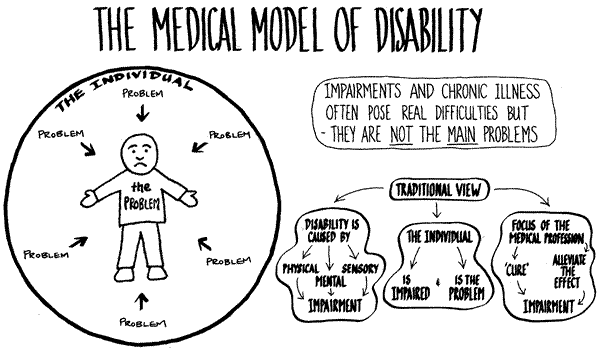> home | aims | attitudes | how to |
attitudes > medical | social | language | dda |
> conclusions | acknowledgements |
![[Taxi Training project logo]](images/logo-taxi.gif)
| TAXI DRIVER TRAINING
PACK > home | aims | attitudes | how to | attitudes > medical | social | language | dda | > conclusions | acknowledgements | |
![[Taxi Training project logo]](images/logo-taxi.gif) |
Our society often considers disability to be a tragedy for the individual and a burden for the family and society. This is based on an individual or medical approach to disability. This model focuses on the lack of physical, sensory or mental functioning, and uses a clinical way of describing an individual's disability. There are certain 'norms' in development and in functioning against which the person is judged. This model leads to a dehumanising view, where only the nature and severity of the impairment is important, together with the extent to which the difference can be put right or minimised. It defines and categorises disabled people by their impairment, and it casts the individual as the victim or problem.

Many disabled people have rejected this model. They say it has led to low self-esteem, undeveloped life skills, poor education and consequent high unemployment levels. It has also resulted in the segregation of disabled people, thus breaking natural relationships with their families, communities and society as a whole.
Since this medical or individual approach results in emotions such as fear of pity, society has traditionally not recognised disabled people's needs as "rights". Where their needs have been met, it has often been through charitable giving - reinforcing the idea of disabled people as passive recipients.